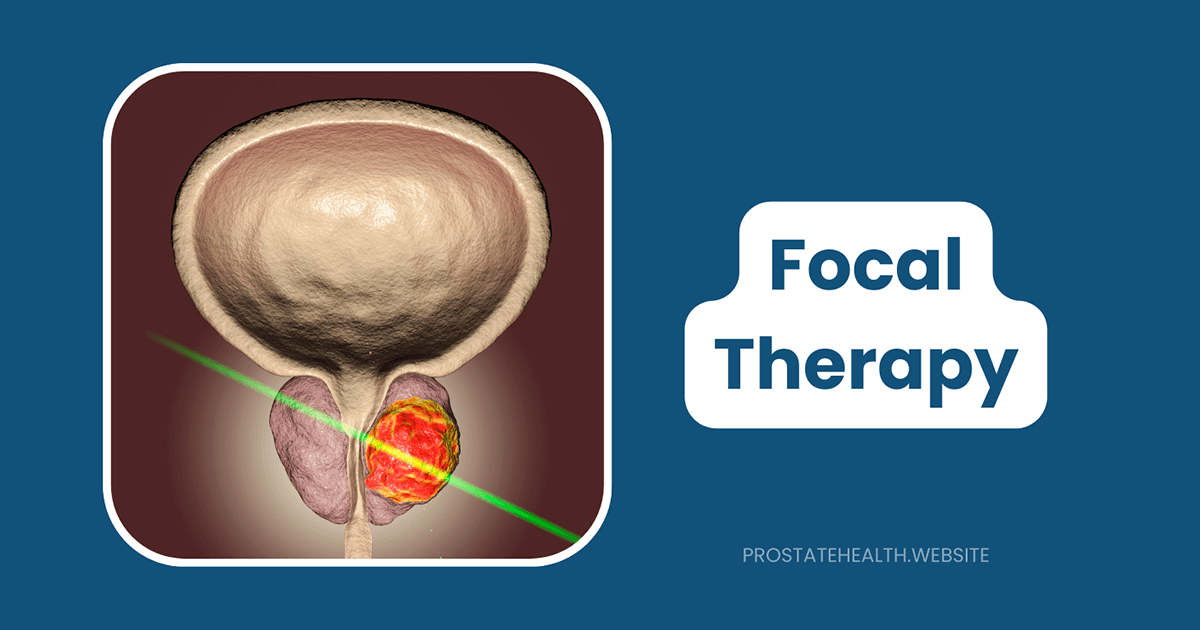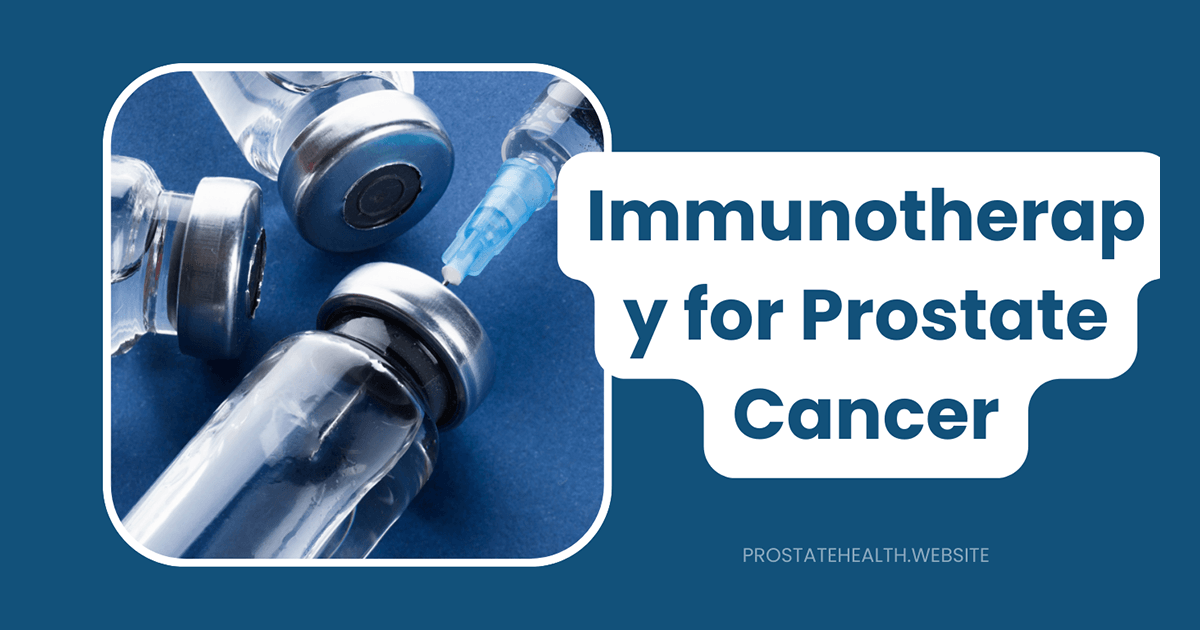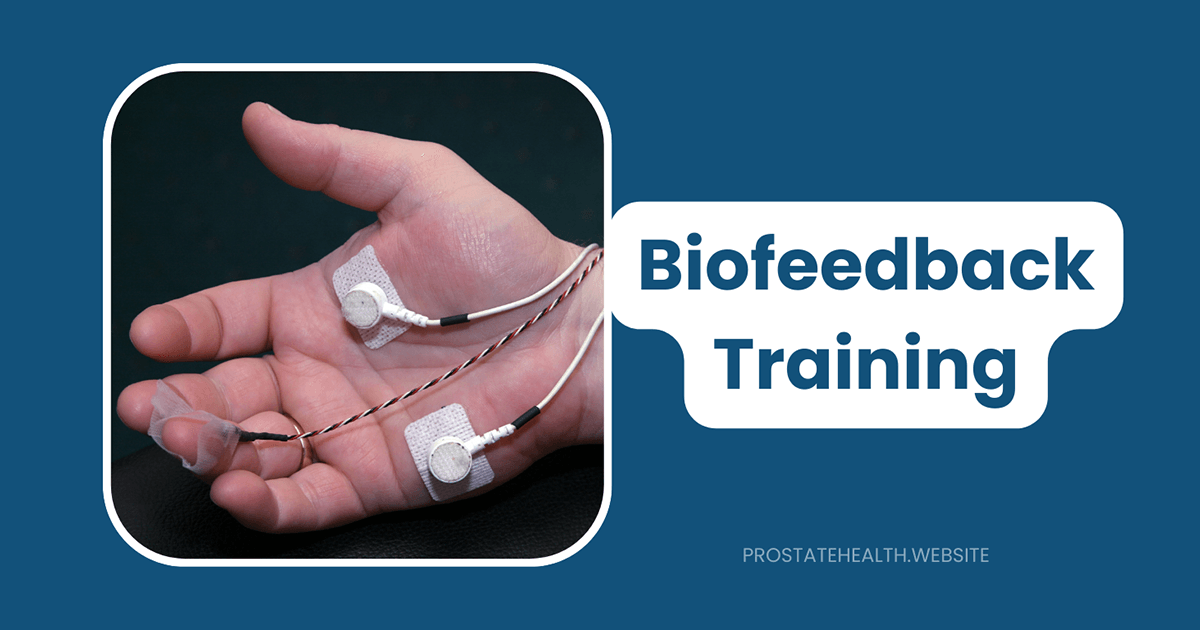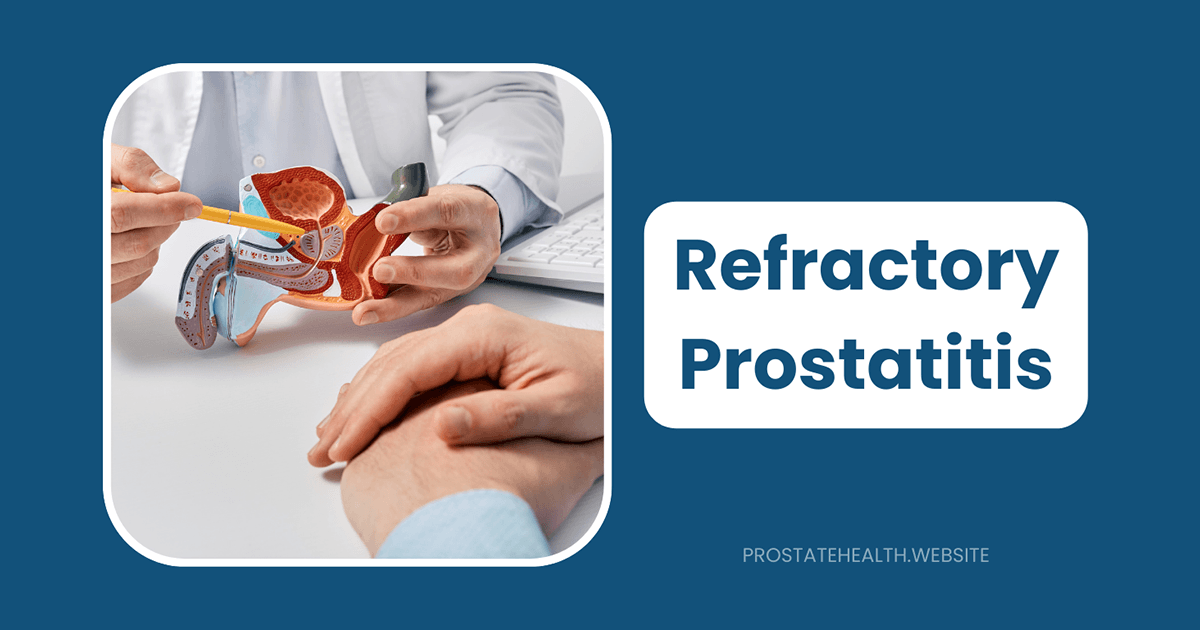Pain Management Strategies for Chronic Prostatitis
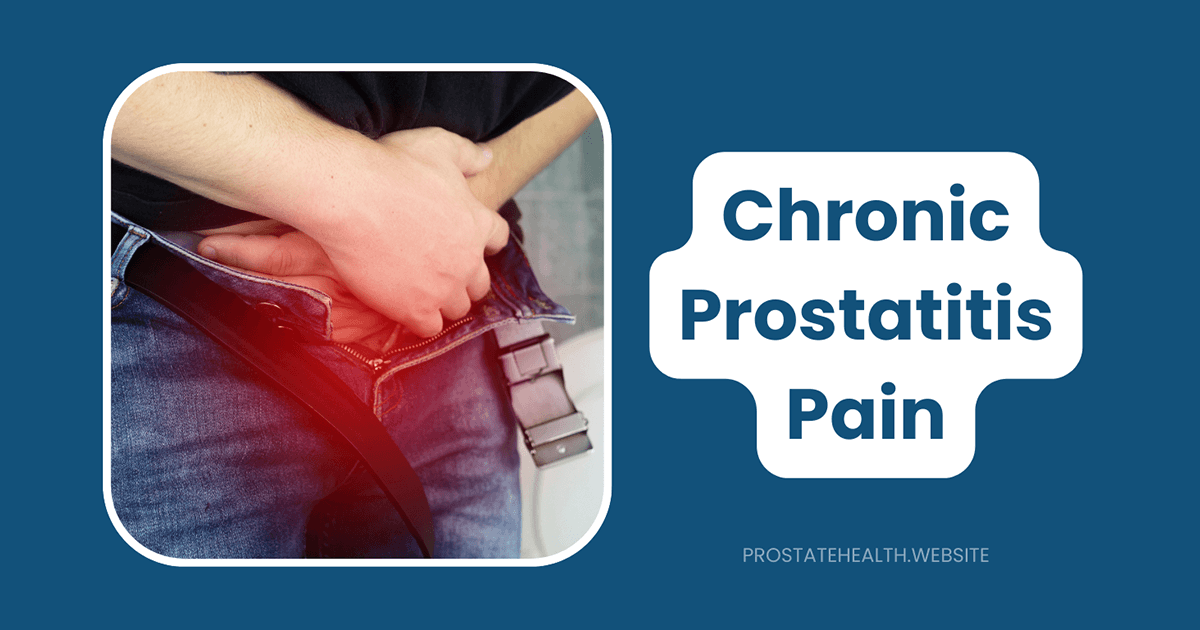
Chronic prostatitis/chronic pelvic pain syndrome (CP/CPPS) affects approximately 2-6% of men worldwide, making it one of the most common urological conditions in men under 50. Despite its prevalence, CP/CPPS remains challenging to treat, with many men suffering from persistent pain that significantly impacts their quality of life.
“Chronic prostatitis is often misunderstood and undertreated,” explains Dr. Robert Chen, urologist. “Many patients bounce from doctor to doctor seeking relief, only to be told their tests are normal or to be prescribed repeated courses of antibiotics that don’t help.”
The good news is that our understanding of CP/CPPS has evolved significantly, leading to more effective multimodal approaches to pain management. This comprehensive guide explores evidence-based strategies to help manage chronic prostatitis pain and improve your quality of life.
Understanding Chronic Prostatitis Pain
Before diving into management strategies, it’s important to understand the nature of chronic prostatitis pain:
Types of Pain in CP/CPPS
Chronic prostatitis pain can manifest in various ways:
- Pelvic pain: Discomfort in the lower abdomen, perineum (area between scrotum and rectum), or pubic area
- Genital pain: Pain in the penis, testicles, or scrotum
- Urinary pain: Burning or discomfort during or after urination
- Ejaculatory pain: Discomfort during or after ejaculation
- Referred pain: Pain in the lower back, inner thighs, or rectum
Pain Mechanisms in CP/CPPS
The pain of chronic prostatitis involves multiple mechanisms:
- Inflammatory processes: Even in “non-inflammatory” CP/CPPS, subtle inflammation may contribute to pain
- Neuromuscular dysfunction: Pelvic floor muscle tension and spasm
- Neuropathic pain: Sensitization of nerves in the pelvic region
- Central sensitization: Changes in how the brain processes pain signals
- Psychosocial factors: Stress, anxiety, and depression can amplify pain perception
“Understanding that CP/CPPS pain involves multiple mechanisms explains why single-modality treatments often fail,” notes Dr. Chen. “Effective pain management requires addressing all contributing factors simultaneously.”
Multimodal Approach to Pain Management
Research consistently shows that a multimodal approach—combining several treatment strategies—is most effective for managing CP/CPPS pain. The American Urological Association (AUA) guidelines recommend individualized treatment plans that address the specific symptoms and contributing factors for each patient.
The UPOINT System
Many specialists now use the UPOINT classification system to guide treatment. This system categorizes CP/CPPS symptoms into six domains:
- U: Urinary symptoms
- P: Psychosocial dysfunction
- O: Organ-specific findings
- I: Infection
- N: Neurological/systemic conditions
- T: Tenderness of muscles
Treatment is then tailored to address each relevant domain, resulting in more effective pain management.
Physical Therapy and Pelvic Floor Rehabilitation
Physical therapy has emerged as one of the most effective interventions for CP/CPPS pain, particularly for men with pelvic floor muscle dysfunction.
How Pelvic Floor Dysfunction Contributes to Pain
Studies show that men with CP/CPPS often have:
- Higher resting tension in pelvic floor muscles
- Difficulty relaxing these muscles after contraction
- Trigger points (hypersensitive areas) in pelvic floor muscles
- Altered coordination of pelvic floor muscles during activities
Pelvic Floor Physical Therapy Techniques
A specialized pelvic floor physical therapist may use various techniques:
- Manual Therapy
- External and internal myofascial release
- Trigger point release
- Connective tissue manipulation
- Gentle stretching of tight muscles
- Biofeedback Training
- Using sensors to provide visual or auditory feedback about muscle tension
- Learning to consciously relax pelvic floor muscles
- Improving awareness of muscle states
- Therapeutic Exercises
- Specific stretches for tight muscles
- Coordination exercises
- Progressive relaxation techniques
- Core strengthening with proper breathing
- Home Exercise Program
- Daily relaxation exercises
- Stretching routines
- Self-massage techniques
- Proper sitting and movement patterns
Effectiveness of Physical Therapy
Research supports the effectiveness of physical therapy for CP/CPPS:
- Studies show significant reductions in pain scores
- Improvements in urinary symptoms
- Enhanced quality of life
- Better sexual function
“Physical therapy was a game-changer for me,” shares Michael, 42, who suffered from CP/CPPS for three years. “After six weeks of treatment, my pain decreased from a constant 7/10 to occasional 2/10 flares. I finally got my life back.”
Self-Help Relaxation Techniques
Several relaxation techniques can be practiced at home to complement professional treatment:
1. Diaphragmatic Breathing
How to practice:
- Lie on your back with knees bent
- Place one hand on your chest and one on your abdomen
- Breathe in slowly through your nose, allowing your abdomen to rise (not your chest)
- Exhale slowly through pursed lips, feeling your abdomen fall
- Practice for 5-10 minutes, 2-3 times daily
Benefits: Reduces overall tension, activates the parasympathetic nervous system, and indirectly relaxes the pelvic floor.
2. Pelvic Floor Drops
How to practice:
- Sit comfortably on a chair or exercise ball
- Imagine your pelvic floor as an elevator
- Take a deep breath in
- As you exhale, visualize the elevator “dropping” down several floors
- Feel the muscles of your pelvic floor lengthen and relax
- Hold this relaxed state for 30-60 seconds
- Repeat 5-10 times, several times daily
Benefits: Directly targets pelvic floor tension, teaches conscious relaxation of these muscles.
3. Progressive Muscle Relaxation
How to practice:
- In a comfortable position, tense a muscle group for 5-10 seconds
- Release and relax for 20-30 seconds, noticing the difference
- Progress through major muscle groups from feet to head
- When you reach the pelvic area, focus on completely releasing tension
Benefits: Improves body awareness, reduces overall muscle tension, and helps distinguish between tense and relaxed states.
4. Gentle Stretching
Key stretches:
- Happy Baby Pose: Lie on back, hold feet with knees bent toward armpits
- Child’s Pose: Kneel with buttocks on heels, stretch arms forward, rest forehead on floor
- Butterfly Stretch: Sit with soles of feet together, knees out, gently press knees down
- Piriformis Stretch: Lie on back, cross ankle over opposite knee, pull knee toward chest
Benefits: Releases tension in muscles connected to the pelvic floor, improves flexibility and circulation.
Pharmacological Approaches to Pain Management
Medications can be an important component of CP/CPPS pain management, though they work best as part of a comprehensive approach.
Anti-Inflammatory Medications
Options:
- Nonsteroidal anti-inflammatory drugs (NSAIDs) like ibuprofen or naproxen
- COX-2 inhibitors like celecoxib
Effectiveness: Moderate for inflammatory pain; studies show variable results in CP/CPPS.
Best for: Short-term use during flares, particularly if inflammation is a significant component.
Alpha-Blockers
Options:
- Tamsulosin (Flomax)
- Alfuzosin (Uroxatral)
- Silodosin (Rapaflo)
Effectiveness: Modest improvement in pain and urinary symptoms in some patients.
Best for: Men with significant urinary symptoms alongside pain.
Neuromodulatory Medications
Options:
- Tricyclic antidepressants (amitriptyline, nortriptyline)
- Gabapentinoids (gabapentin, pregabalin)
- Serotonin-norepinephrine reuptake inhibitors (duloxetine)
Effectiveness: Moderate to good for neuropathic pain components.
Best for: Chronic, burning pain suggestive of neuropathic mechanisms; pain that disrupts sleep.
Muscle Relaxants
Options:
- Baclofen
- Cyclobenzaprine
- Tizanidine
Effectiveness: Limited evidence specifically for CP/CPPS, but may help when muscle spasm is prominent.
Best for: Short-term use during severe muscle-related flares.
“Medication alone rarely resolves chronic prostatitis pain,” cautions Dr. Chen. “However, the right medication can reduce pain enough to allow participation in physical therapy and other active treatments, creating a positive cycle of improvement.”
Mind-Body Approaches
The brain plays a crucial role in how we experience pain. Mind-body approaches can help modify pain perception and reduce suffering.
Cognitive Behavioral Therapy (CBT)
CBT helps identify and change negative thought patterns that amplify pain. Research shows CBT can:
- Reduce pain catastrophizing (exaggerated negative thoughts about pain)
- Improve coping strategies
- Reduce anxiety and depression that accompany chronic pain
- Enhance the effectiveness of other treatments
Mindfulness-Based Stress Reduction (MBSR)
MBSR teaches present-moment awareness without judgment. Studies show it can:
- Reduce pain intensity ratings
- Improve quality of life
- Decrease stress-related symptoms
- Help patients relate differently to pain sensations
Stress Management Techniques
Stress often triggers or worsens CP/CPPS symptoms. Effective stress management includes:
- Regular relaxation practices
- Time management strategies
- Setting appropriate boundaries
- Adequate sleep hygiene
- Regular enjoyable activities
“Learning mindfulness changed my relationship with pain,” reports James, 38. “Before, I’d panic when symptoms started, which made everything worse. Now I can observe the sensations without getting caught in a spiral of anxiety.”
Lifestyle Modifications
Several lifestyle factors can influence CP/CPPS pain:
Dietary Considerations
Many men with CP/CPPS report that certain foods and beverages trigger or worsen symptoms:
Common triggers to consider limiting:
- Spicy foods
- Caffeine
- Alcohol
- Acidic foods and beverages
- Artificial sweeteners
Potentially beneficial additions:
- Anti-inflammatory foods (fatty fish, olive oil, nuts, berries)
- Adequate water intake
- Fiber-rich foods for regular bowel function
Physical Activity
Regular, appropriate exercise can help manage CP/CPPS pain:
Beneficial activities:
- Walking
- Swimming
- Gentle yoga
- Tai chi
- Stationary cycling with a properly fitted seat
Activities that may worsen symptoms (individual responses vary):
- High-impact exercises
- Heavy weightlifting, especially with poor form
- Cycling on poorly fitted bikes
- Activities that increase pelvic floor tension
Sitting Modifications
Prolonged sitting often aggravates CP/CPPS pain:
Helpful strategies:
- Use a cushion designed to reduce perineal pressure
- Take regular standing breaks (every 30 minutes)
- Adjust chair height and angle for optimal posture
- Consider a standing desk for part of the day
- Practice proper sitting posture with neutral spine
Heat and Cold Therapy
Simple temperature-based interventions can provide temporary relief:
Heat Therapy
Applications:
- Warm sitz baths (10-15 minutes)
- Heating pads on low setting
- Warm shower directed at painful areas
Benefits: Increases blood flow, relaxes muscles, reduces pain perception
Best for: Muscle tension, spasm, and general discomfort
Cold Therapy
Applications:
- Ice packs wrapped in thin cloth
- Cold compresses
- Cooling gels
Benefits: Reduces inflammation, numbs pain, decreases muscle spasticity
Best for: Acute flares with inflammation, hypersensitive areas
Alternative and Complementary Approaches
Several complementary approaches show promise for CP/CPPS pain management:
Acupuncture
Evidence: Multiple studies show acupuncture may provide significant symptom improvement in CP/CPPS.
Effectiveness: A Cochrane review found acupuncture likely improves symptoms with a mean difference of -5.79 on the NIH-CPSI score at 6-8 weeks.
Considerations: Seek practitioners experienced with pelvic pain; results may vary; multiple sessions typically needed.
Extracorporeal Shockwave Therapy (ESWT)
Evidence: Research shows ESWT can reduce CP/CPPS symptoms with a mean difference of -6.18 on the NIH-CPSI score.
Effectiveness: Benefits may diminish over time but can be significant in the short term.
Considerations: Not widely available; typically not covered by insurance; multiple sessions required.
Transcutaneous Electrical Nerve Stimulation (TENS)
Evidence: Limited but promising research for CP/CPPS specifically.
Effectiveness: May help reduce pain by interfering with pain signal transmission.
Considerations: Inexpensive; can be self-administered; requires proper electrode placement.
Advanced Interventional Approaches
When conservative measures fail to provide adequate relief, several interventional options may be considered:
Trigger Point Injections
Procedure: Injection of local anesthetic, sometimes with corticosteroid, into trigger points in pelvic floor muscles.
Effectiveness: Can provide temporary relief and break the pain cycle.
Considerations: Usually performed by pain specialists or specially trained urologists; may require multiple sessions.
Nerve Blocks
Procedure: Injection of anesthetic agents around specific nerves involved in pelvic pain.
Effectiveness: Variable; can provide diagnostic information and temporary relief.
Considerations: Typically performed by pain specialists; effects usually temporary.
Botulinum Toxin Injections
Procedure: Injection of botulinum toxin into pelvic floor muscles to reduce spasticity.
Effectiveness: Some studies show promising results for refractory cases.
Considerations: Off-label use; specialized procedure; effects last 3-6 months; may require repeat injections.
Creating Your Personalized Pain Management Plan
Managing CP/CPPS pain effectively requires a personalized approach:
1. Comprehensive Evaluation
Work with healthcare providers to assess:
- Pain characteristics and patterns
- Contributing factors (physical, psychological, behavioral)
- Previous treatments and responses
- Impact on quality of life
- Presence of pelvic floor dysfunction
- Psychological factors like stress, anxiety, and depression
2. Set Realistic Goals
Effective pain management often means:
- Reducing, not eliminating, pain
- Improving function and quality of life
- Developing better coping strategies
- Reducing reliance on medications
- Preventing flares
3. Multimodal Treatment Plan
Based on your evaluation, develop a plan that may include:
- Physical therapy for pelvic floor dysfunction
- Appropriate medications
- Self-management techniques
- Lifestyle modifications
- Psychological support if needed
- Complementary approaches
4. Regular Reassessment
Pain management is an ongoing process:
- Track your symptoms and responses to treatments
- Regularly review progress with healthcare providers
- Adjust strategies based on results
- Discontinue ineffective treatments
- Add new approaches as needed
Finding the Right Healthcare Team
Effective CP/CPPS pain management often requires a multidisciplinary approach:
Key Specialists to Consider
- Urologist: Preferably one with special interest in pelvic pain
- Pelvic Floor Physical Therapist: Specialized training in male pelvic pain
- Pain Management Specialist: For medication management and interventional approaches
- Psychologist or Therapist: For psychological aspects of chronic pain
- Primary Care Physician: To coordinate care and manage overall health
Questions to Ask Potential Providers
- What is your experience treating chronic prostatitis/chronic pelvic pain syndrome?
- Do you use a multimodal approach to treatment?
- Do you collaborate with other specialists?
- What is your philosophy on pain management?
- What percentage of your patients see improvement?
“Finding the right healthcare team is crucial,” emphasizes Dr. Chen. “Look for providers who listen to your concerns, understand the complexity of CP/CPPS, and are willing to try different approaches if initial treatments don’t provide relief.”
Living Well Despite Chronic Pain
While working toward pain reduction, these strategies can help you live well despite CP/CPPS:
Pacing Activities
- Balance activity with rest
- Break tasks into manageable segments
- Prioritize important activities
- Learn to recognize early warning signs of flares
Building Resilience
- Develop a support network
- Practice self-compassion
- Focus on what you can do, not limitations
- Celebrate small improvements
Maintaining Perspective
- Remember that flares are temporary
- Separate pain from suffering
- Find meaning and purpose despite pain
- Stay engaged with life
“I’ve learned that while I can’t always control my pain, I can control how I respond to it,” shares Robert, 45. “On better days, I do more. On worse days, I focus on self-care. But I don’t let CP/CPPS define me anymore.”
Conclusion: Hope and Persistence
Managing chronic prostatitis pain is rarely a quick or simple process. It typically requires patience, persistence, and a willingness to try different approaches. However, with the right combination of treatments and self-management strategies, most men can achieve significant improvement in their symptoms and quality of life.
Remember that each person’s experience with CP/CPPS is unique. What works for one person may not work for another, so be prepared to advocate for yourself and work closely with your healthcare team to find the approaches that work best for you.
The good news is that our understanding of CP/CPPS continues to evolve, with new research leading to improved treatment options. By staying informed and proactive in your care, you can maximize your chances of finding effective pain relief and reclaiming your quality of life.
External Resources:
- American Urological Association – CP/CPPS Guidelines
- International Pelvic Pain Society
- Prostatitis Foundation

